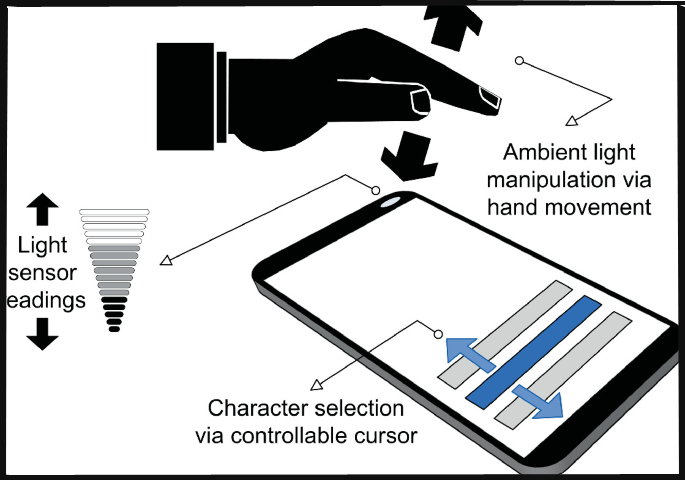
Mobile light sensors:
Smartphones and tablets commonly integrate mobile light sensors, also known as ambient light sensors. These sensors measure the intensity of ambient light in the device’s environment.
Mobile light sensors typically work based on the principle of photodetection, most commonly using photodiodes or phototransistors. Here’s a simplified explanation of how they work:
- Photodetection Principle: Mobile light sensors utilize photodetection, which involves the conversion of light into an electrical signal. Photodiodes or phototransistors are semiconductor devices that generate an electrical current when exposed to light.
- Ambient Light Measurement: The sensor is positioned on the device, usually near the screen. It detects the intensity of ambient light falling on it.
- Analog to Digital Conversion: The photodetector generates electrical current, which the device’s software converts into a digital signal for processing.
- Automatic Brightness Adjustment: The device’s software uses the digital signal from the light sensor to determine the ambient light level. Based on predefined algorithms or user settings, it adjusts the screen brightness accordingly to optimize visibility and conserve battery power.
- Feedback Loop: In some cases, the brightness adjustment process may involve a feedback loop where the sensor continuously monitors the ambient light and adjusts the screen brightness in real-time to maintain optimal visibility.
- Integration with Proximity Sensors: In addition to ambient light detection, some devices integrate light sensors with proximity sensors. This integration helps in scenarios such as turning off the screen during phone calls when the device is held close to the user’s face.
Here are the features, advantages, and disadvantages of mobile light sensors:
Features:
- Ambient Light Measurement: The primary function of mobile light sensors is to measure the intensity of ambient light in the surrounding environment.
- Automatic Brightness Adjustment: Mobile devices use light sensor data to automatically adjust the screen brightness based on ambient light conditions. This feature enhances user experience by optimizing screen visibility and conserving battery life.
- Energy Efficiency: By adjusting screen brightness according to ambient light levels, mobile light sensors contribute to energy efficiency by reducing power consumption when lower screen brightness is sufficient.
- Enhanced Viewing Experience: Automatic brightness adjustment ensures comfortable viewing experiences for users by optimizing screen brightness in different lighting conditions, such as dim environments or bright sunlight.
- Proximity Sensing: Some mobile devices integrate proximity sensors with light sensors to detect when the device is held close to the user’s face during calls. This functionality helps prevent accidental screen touches and conserves power by turning off the display when not in use.
Advantages:
- Improved User Experience: Automatic brightness adjustment based on ambient light levels enhances user comfort and convenience by providing optimal screen visibility in various lighting conditions.
- Battery Conservation:Light sensors save battery by adjusting screen brightness dynamically.
- Energy Efficiency:Adjusting screen brightness saves energy, aiding device sustainability.
- Reduced Eye Strain: Optimizing screen brightness lessens eye strain during extended device use.
Disadvantages:
- Accuracy Limitations:Mobile light sensors may be inaccurate in specific lighting conditions.
- Response Time: Mobile light sensors can lag, causing temporary discrepancies in screen brightness.
- Calibration Issues:Light sensor calibration may change, affecting automatic brightness accuracy.
- Dependency on User Preferences: Automatic brightness may not always match user preferences, prompting manual adjustments regardless of lighting.
Overall, mobile light sensors provide significant benefits in terms of user comfort, energy efficiency, and battery conservation. However, users should be aware of their limitations and occasional inaccuracies, particularly in challenging lighting environments.
